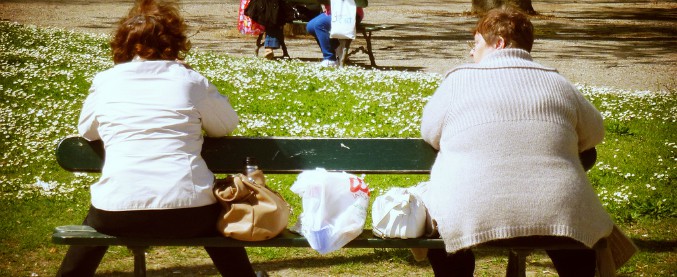From Bucarest to Rome with Liliana, caretaker and lucky

It all started with Moroccans. Then we had the Albanians, and then, later on, the Romanians. Today the Arabs. While the Romanians are in the European Union. More or less. Because in our view actually, instinctively, they are always somehow immigrants. Even though no one would ever say: a Spanish immigrant.
Or think of an American as “a non-EU citizen“.
Romanians joined the EU in 2007. Combined with Polish plumbers, they were expected to quickly crush our economy. And our society, generally speaking: according to Luigi Di Maio, one of my country’s prime minister hopefuls, over the last years Italy imported 40 percent of Romanian thugs. And so I am now quite curious of this Liliana, who sits next to me for about 35 hours on my way back by bus from Bucharest to Rome. I have thousands questions. Even though the first ones are actually hers. How is Bucharest?, she asks me. Is it really as amazing as we are told?
She’s never been there.
She is originally from Costanta, on the Black Sea. And of all the world, she has seen only two cities: Castellammare di Stabia, in southern Italy, where she worked for six months and was never paid, and now Arezzo. In central Italy. Where she takes care of a relatively young woman, a 70-year-old, who depends on an oxygen tank, yet, and you have always to keep an eye out, because if it stops, she stops breathing. And next door, on the same floor, there is her sister with her husband. Who has Parkinson’s. In the end, she takes care of the three of them. “Well. The four of them: they’ve just got a dog. I deal with everything. The house, the food. Doctors and medicines.” And yet, she says, I am lucky. I have a contract, she says. I have a salary. “And I have also a day off.” Having no home, no space of her own, she spends it at the mall.
The woman’s sons live in Milan. Sometimes they give a phone call.
But they are good people, she says. I am lucky.
She holds a BA in Chemistry.
In Romania, she tried all what she could. All possible jobs. Factory worker, day labourer. She tried her best not to leave. Especially because she had two kids: and an alcoholic husband. But that was Ceausescu’s Romania, she says. “And despite I was working all around the clock, we had nothing. Literally. Like many others. We often went to bed hungry. I didn’t want a future for my children: first of all, I wanted a present,” she says. Even if in this way, it’s been a present she has completely missed. They grew up alone. And yet, I am lucky, she says. “Today they are in their twenties, and they are both employed on cruise ships. While so many other kids, instead, got lost, and they are now drug addicts. Or committed suicide”. I am lucky, she says.
Even if her kids’, actually, is not the only life she has missed. “I know many caretakers, yes. And sometimes we meet at the mall. But that’s it,”she says. “In the end, it’s like living in your office. You have no time, and no mind, for anything else.”
She’s been in Italy for nearly 20 years. But she hasn’t a single Italian friend.
Those like her not only didn’t crush our society: they have saved it.
And at the expenses of theirs.
In English I usually use the word “caretaker”. But it’s always hard to explain what I mean. It’s hard to explain that in Italy there is no welfare state, that families are left alone with their elderly – and with countless other things. We all have a Liliana at home, for us it’s normal. As it’s normal their life. Even if, yes: it’s like living in your workplace. And in a workplace, moreover, populated by physically, and psychologically, troubled eighty-somethings. And feeling as a mere ATM for your own family, for a husband who in the meantime is probably dating another woman, is not of much help.
One caretaker out of four suffers from depression.
It is known as “Italy syndrome”.
An Italy where yet, despite it all, Liliana would like to stay. It is my country now, she says. More than Romania. “But I can’t. I could never afford a caretaker.”



